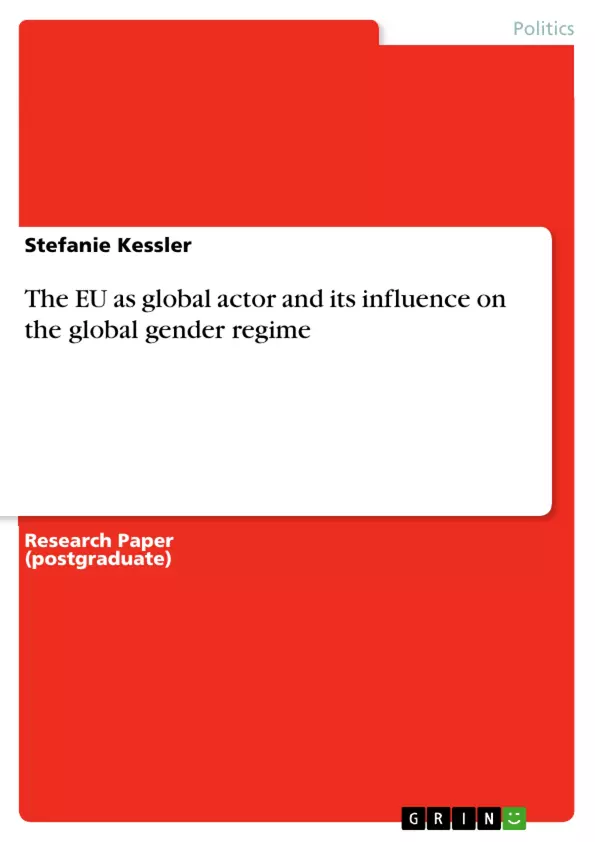In the last years the European Union (EU) transformed the European gender regime towards gender equality thoroughly. This dissertation deals with the question of the EU's external influence on transforming societies. Is the external influence coherent with internal claims? Trade is the EU's most important external policy area. The EU is an economic giant based on the largest single market in the world. Thus the EU has power in and through trade. The EU makes increasingly the adaptation of normative standards a
condition to access its market. Does the EU integrate also standards on gender equality? And does the EU transform gender regimes globally through trade? What impacts does the EU have on gender regimes?
This dissertation examines gender impacts in the Sustainability Impact Assessments that show possible impacts of trade agreements between the EU and its partners. The analysis shows that gender is secondary to economic growth and not directed towards gender equality. As a
consequence the EU does not use its power through trade and the coherence of internal and external efforts is questionable.
Inhaltsverzeichnis (Table of Contents)
- Introduction
- Theoretical Reflections
- EU as a global actor in trade
- Analysis of the Sustainable Impact Assessments (SIAs)
Zielsetzung und Themenschwerpunkte (Objectives and Key Themes)
This dissertation examines the European Union's (EU) external influence on global gender regimes, specifically focusing on whether the EU's external actions align with its internal policies promoting gender equality. The research investigates the EU's use of trade policy as a tool for influencing gender equality in partner countries.
- The EU's role as a global actor and its impact on international relations.
- The coherence between the EU's internal gender equality policies and its external actions.
- The EU's use of trade agreements to promote or hinder gender equality.
- Analysis of Sustainability Impact Assessments (SIAs) and their consideration of gender issues.
- The influence of economic growth priorities on gender equality considerations within EU trade policy.
Zusammenfassung der Kapitel (Chapter Summaries)
Introduction: This chapter introduces the EU's growing global role, tracing its origins and development from the post-World War II era to its current position. It highlights the EU's initial focus on economic cooperation and its subsequent expansion into other policy areas.
Theoretical Reflections: This section will likely lay out the theoretical framework used to analyze the EU's impact on gender regimes. This might include theories of international relations, gender studies and trade policy.
EU as a global actor in trade: This chapter will delve into the EU's significant role as a global trade actor. It will likely examine the EU’s economic power and its use of trade as a tool for influencing other nations.
Analysis of the Sustainable Impact Assessments (SIAs): This chapter presents an analysis of SIAs related to EU trade agreements, assessing the extent to which gender considerations are integrated into these assessments and the impact on gender equality.
Schlüsselwörter (Keywords)
European Union, gender equality, global governance, trade policy, Sustainability Impact Assessments (SIAs), gender regimes, economic growth, normative standards, external influence.
- Quote paper
- Stefanie Kessler (Author), 2008, The EU as global actor and its influence on the global gender regime, Munich, GRIN Verlag, https://www.grin.com/document/122751



